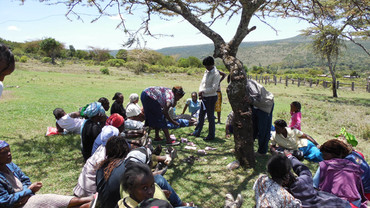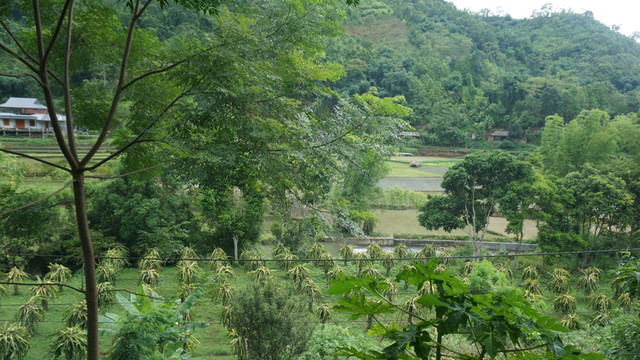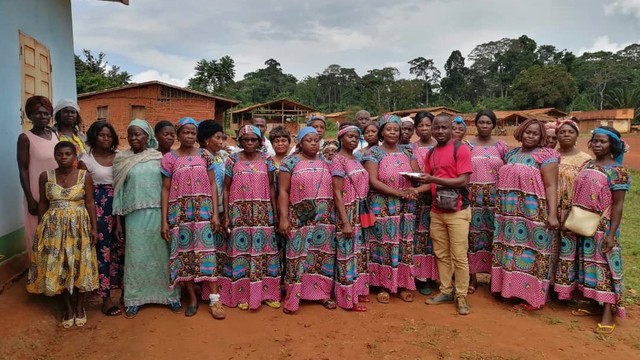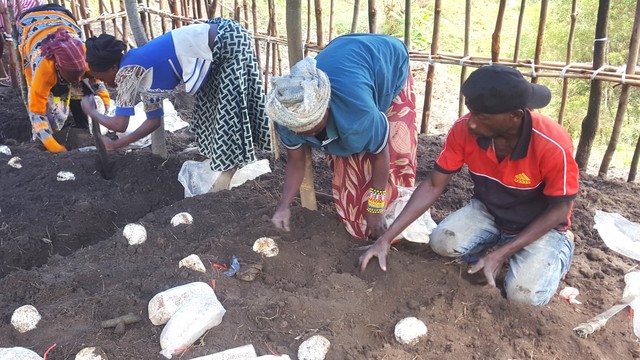Time for a new look at social impacts of protected areas
A new framework for assessing the social impacts of protected areas will be key to ensuring conservation is effective, and contributes to human well-being and poverty reduction.


A giraffe takes stock at Kenya's Ol Pejeta Conservancy, where Social Assessment of Protective Area fieldwork starts next week (Photo: www.kicheche.com via Creative Commons http://creativecommons.org/licenses/by/2.0/)
One of the oldest tools in the conservation box — the protected area — has a chequered history as far as local communities are concerned. In some cases protected areas have brought benefits — jobs and more. But in others they have created problems, especially when they evicted local people or restricted them from using the area's natural resources.
In recent years, political commitment to social equity in protected area conservation has grown, but it is not easy to tell what's good from bad. For these reasons, IIED and UNEP-WCMC have launched a project that will develop a new approach that governments and others can use to assess the social impacts — both positive and negative — of protected areas.
Towards social equity in conservation
National parks and other protected places don't just secure the survival of threatened species. They also provide us with important gifts by, among other things, regulating local climate and river flows, protecting species that pollinate our crops, and simply being places of natural beauty.
But history shows that livelihoods and rights can suffer when states protect areas in which people live, have sacred sites, or from which they take resources. When protected areas do bring benefits there is a risk that local elites will capture these gains. The benefits of conservation can come at a cost to some of the poorest people who live nearby.
The global conservation community began to take this seriously in 2003 at the World Parks Congress in Durban. This once-a-decade event — the biggest gathering of its kind — ended with a declaration which included the principle that: "protected areas should strive to contribute to poverty reduction at the local level, and at the very minimum must not contribute to or exacerbate poverty".
Then, in 2010, the nearly 200 nations that are party to the UN Convention on Biological Diversity, agreed to increase to 17 per cent the total area of land worldwide that is protected — and to do so "equitably". The convention also requests countries to assess the social benefits and costs of protected areas, adjust policies to mitigate any harm, and share the benefits equitably.
With equity on the agenda, and ambition in the air, we ought to see change on the ground. But since the Durban World Parks Congress, despite lots of talk and some progress in policy development, little progress has been made in assessing and tracking progress over time.
Part of the reason for slow progress, is a lack of political will — governments have been reluctant to address what is often a controversial issue. But another reason is that equity is a vague concept.
In the context of protected areas it can mean respect for property rights, equitable sharing of benefits and costs within communities and/or between local, national and global levels, or social justice and/or economic empowerment for poorer, more vulnerable people. Efforts to measure equity therefore often measure very different things.
A new approach
With the next World Parks Congress taking place later this year, the time is ripe for a new look at the social impacts of protected areas. More than 9,000 protected areas already use an existing framework on 'management effectiveness', but this focuses mainly on core park management issues (e.g. law enforcement, information systems and financing) with little if any attention to social impacts.
What's missing is a comprehensive way to analyse the benefits and costs that local communities experience and the impact these have on their well-being. Yet countries have committed to undertake exactly this kind of assessment. That's where the Social Assessment of Protected Areas (SAPA) Initiative comes in.
SAPA is an approach that enables users to identify appropriate indicators and tools to measure and analyse social impacts of protected areas. It is primarily aimed at protected area managers — state, private or community — enabling them to improve both policy and practice.
It will be a relatively simple, low cost approach whose process of assessment will increase both the participation of people the protected area affects and the accountability of those who manage the area. Involving a range of stakeholders will build consensus among protected area managers, communities and others about what steps to take to contribute more to poverty reduction and avoid harm.
Alongside supporting the existing management effectiveness framework, SAPA will aid efforts to strengthen the governance of protected areas by revealing evidence of poor governance (e.g. elite capture of benefits) and serving as a means to verify that changes in governance do indeed generate the expected improvement in social impact.
With funding from UK aid via the Darwin Initiative and via DFID, we will work with partners in Kenya, Gabon, Liberia and the Gambia to test the approach in six protected areas – four terrestrial and two marine. Fieldwork at the first site — Ol Pejeta Conservancy in Kenya — starts next week.
We will showcase our early findings at the 2014 World Parks Congress in November and in early 2016 will publish guidelines based the project’s findings in IUCN's series on best practice guidelines.
Our ultimate aims is it ensure policy makers and managers of protected areas can make informed decisions to avoid negative and maximise positive impacts for indigenous and local communities.
Phil Franks is a senior researcher in IIED's natural resources group (phil.franks@iied.org)



